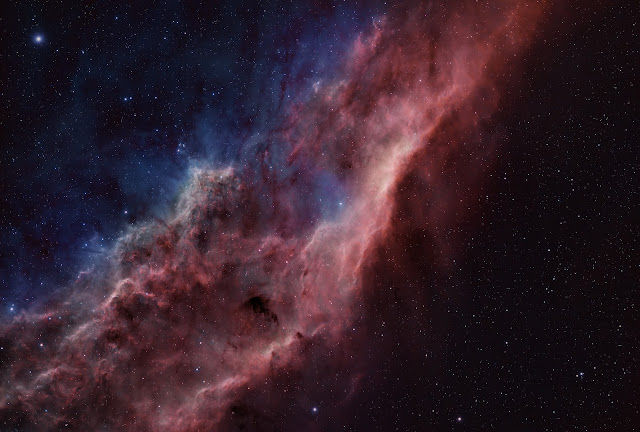-------------------------------------------------
 Looking back over some old images. I found the ever popular Leo triplet of galaxies. Taken with the Canon 40D. I knew I could improve on it so that was the nights target. Taken through the Williams Optics GT81 and using 20 minute guided sub exposures. Calibrated with Dark frames in Maxim DL5. Processed in photoshop. This final cropped image is 3 hours of data. A very pleasing result Perfect focus and some lovely lane structure in all 3 galaxies.
Looking back over some old images. I found the ever popular Leo triplet of galaxies. Taken with the Canon 40D. I knew I could improve on it so that was the nights target. Taken through the Williams Optics GT81 and using 20 minute guided sub exposures. Calibrated with Dark frames in Maxim DL5. Processed in photoshop. This final cropped image is 3 hours of data. A very pleasing result Perfect focus and some lovely lane structure in all 3 galaxies. Me being me I wasn't just satisfied with that. So I loaded Carte Du Ceil and had a closer look. I downloaded the PGC Principle Galaxies Catalogue and brought up my field of view. The field lit up with large number of very little red dots. I loaded side by side Photoshop with my image. It soon became very clear that I had a deep image. The 15th- 18th magnitude galaxies were easily visible. After finding a few dozen I thought I should mark them and see how many I could find. There was a few places I must have missed as I seem to be adding more each time I look. So far the total is 153 and counting.
Me being me I wasn't just satisfied with that. So I loaded Carte Du Ceil and had a closer look. I downloaded the PGC Principle Galaxies Catalogue and brought up my field of view. The field lit up with large number of very little red dots. I loaded side by side Photoshop with my image. It soon became very clear that I had a deep image. The 15th- 18th magnitude galaxies were easily visible. After finding a few dozen I thought I should mark them and see how many I could find. There was a few places I must have missed as I seem to be adding more each time I look. So far the total is 153 and counting.
The fainter galaxies were somewhat more of a challenge.
 The image has been plate solved and I needed this to locate and verify the position of the objects that were barely visible even at 400 x zoom in Photoshop. But I did find that an inverse of the frame gives greater contrast as some of the faintest smudges are just a couple of shades brighter than the background.
The image has been plate solved and I needed this to locate and verify the position of the objects that were barely visible even at 400 x zoom in Photoshop. But I did find that an inverse of the frame gives greater contrast as some of the faintest smudges are just a couple of shades brighter than the background.Incredibly small movements in the mouse movement moved the RA and DEC by arc seconds across the frame and CDC confirms the location of PGC 3542189. As I mentioned earlier the subtle difference in colour in the centre of the square with a contrast boost and inverted. reveals the presence of this Magnitude 20.31 Galaxy. Position confirmed as RA:11:18:17 and
DEC :13:03:11. Unfortunately I am unable to find any information on the galaxy type or distance / redshift other than it has been catalogued.
------------------------------------------------




No comments:
Post a Comment